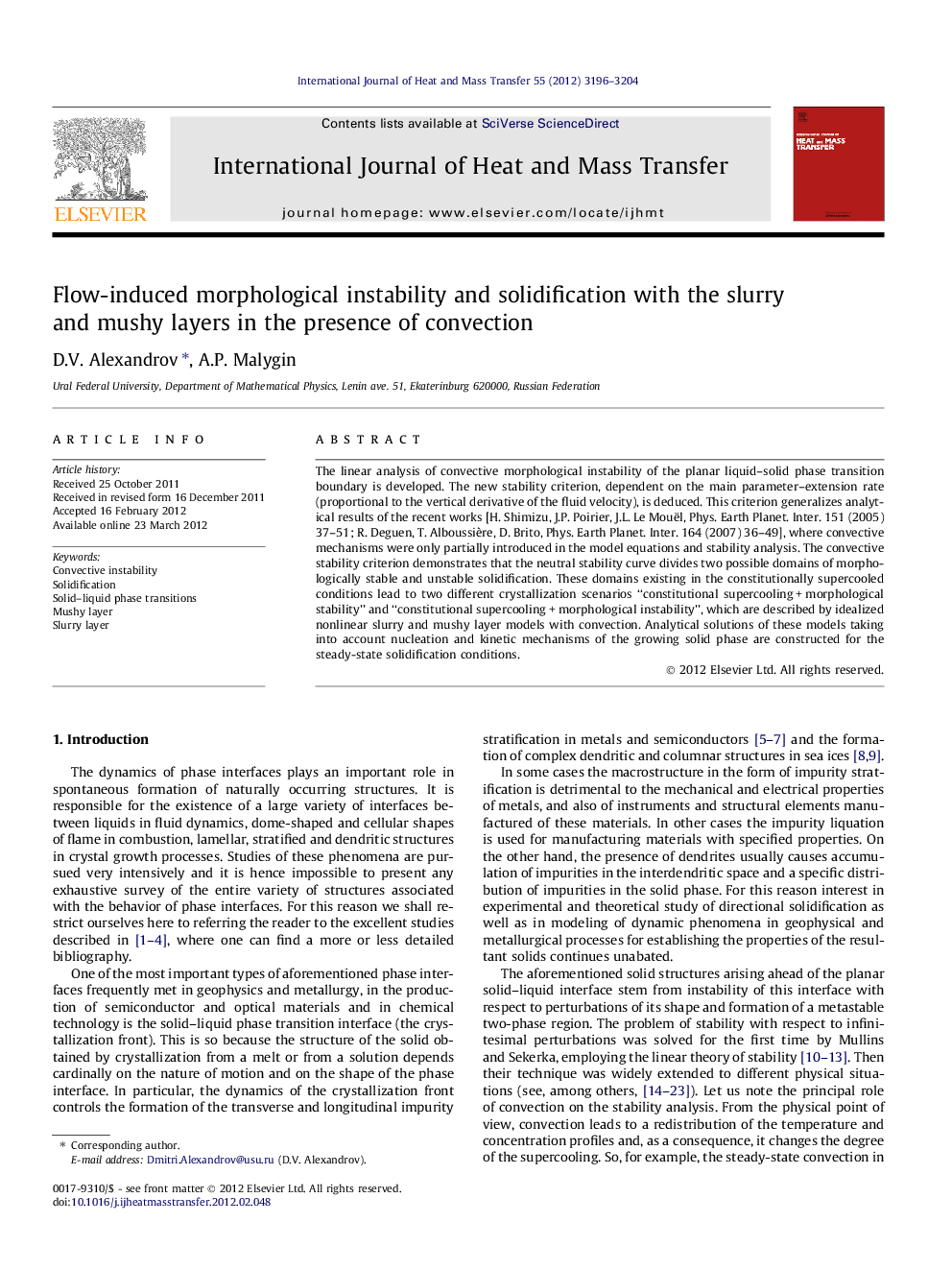| Article ID | Journal | Published Year | Pages | File Type |
|---|---|---|---|---|
| 659499 | International Journal of Heat and Mass Transfer | 2012 | 9 Pages |
The linear analysis of convective morphological instability of the planar liquid–solid phase transition boundary is developed. The new stability criterion, dependent on the main parameter–extension rate (proportional to the vertical derivative of the fluid velocity), is deduced. This criterion generalizes analytical results of the recent works [H. Shimizu, J.P. Poirier, J.L. Le Mouël, Phys. Earth Planet. Inter. 151 (2005) 37–51; R. Deguen, T. Alboussière, D. Brito, Phys. Earth Planet. Inter. 164 (2007) 36–49], where convective mechanisms were only partially introduced in the model equations and stability analysis. The convective stability criterion demonstrates that the neutral stability curve divides two possible domains of morphologically stable and unstable solidification. These domains existing in the constitutionally supercooled conditions lead to two different crystallization scenarios “constitutional supercooling + morphological stability” and “constitutional supercooling + morphological instability”, which are described by idealized nonlinear slurry and mushy layer models with convection. Analytical solutions of these models taking into account nucleation and kinetic mechanisms of the growing solid phase are constructed for the steady-state solidification conditions.
